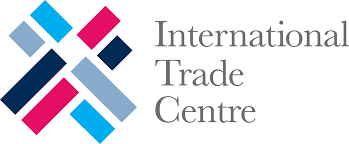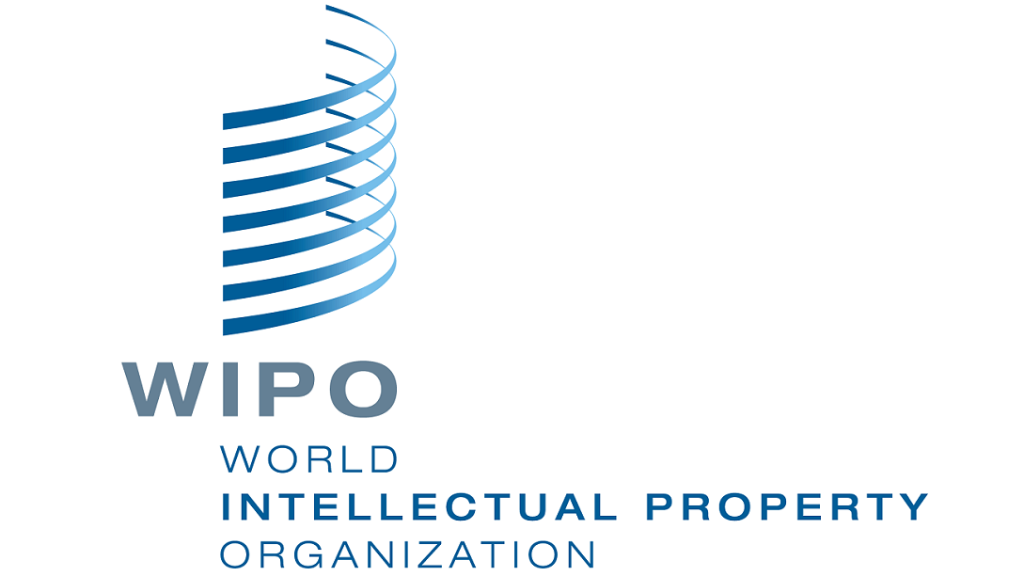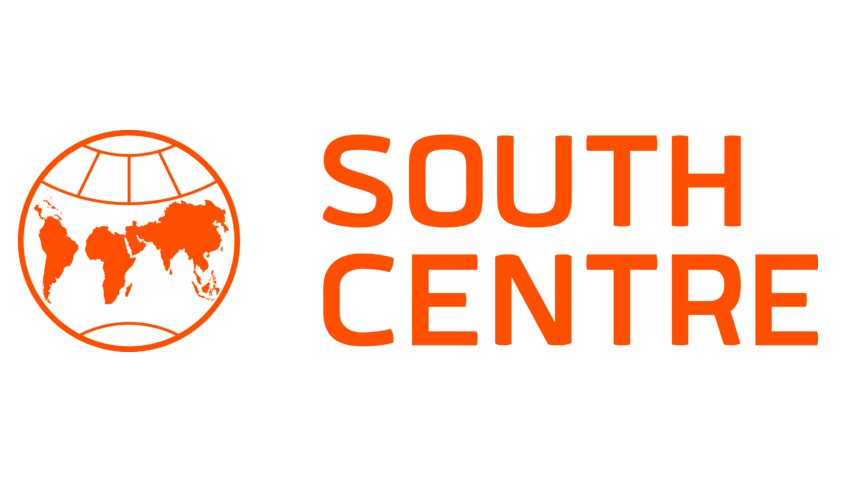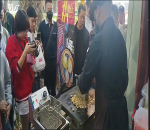Sri Lankan Business Delegation Visits FoodAgro 2024 in Karachi”
Sri Lanka’s first ever participation at the International Jewelry Vietnam (IJV) 2024
“Sri Lanka: Your Vital Island”, Event organized in Brussels
Over 5,000 Americans visited the ‘Sri Lanka Embassy Open house’ in Washington D.C. joining Passport DC 2024
Showcasing Sri Lankan culinary excellence at the Embassy Chef Challenge in Washington DC
Brief Report on “Sri Lanka Beyond Your Dreams” held on 08th March 2024, Hilton Hotel, Dubai, UAE
Towards a digital Sri Lanka: Sri Lankan Embassy in Washington DC hosts an interactive discussion
Sri Lanka Thailand Free Trade Agreement (SLTFTA )
Sri Lanka Tourism Promotion event in Alexandria Governorate
Issuance of Certificate of Origin
SAFTA,SAPTA Certificates of Origin (SAFTA,SAPTA CoOs) are issued with digital signatures from 11th September 2023.
You can watch the video on “Digital Signature: Tutorial for Electronic Certificate of Origin” by clicking the link below,
click here
You can watch the video on “Digital Signature: Tutorial for Electronic Certificate of Origin” by clicking the link below,
click here
Right to Information
- Right to Information Act
- Regulations promulgated under the Right to Information Act
- Information Officer
Ms. A.G.M Kumari -
071 450 1444
Vision
“Raising living standards of the people through international trade relations”
Mission
“To develop and promote Sri Lanka’s foreign trade relations at bilateral, regional and multilateral levels by the effective implementation of government trade policy, with a view to raising the standards of living and realizing a higher quality of life through the increase of total production, income and employment levels, thereby actively contributing to the overall economic growth of Sri Lanka.”
Related Links
 World Trade Organization
World Trade Organization United Nations Conference on Trade and Development
United Nations Conference on Trade and Development SAARC Secretariat
SAARC Secretariat International
International
Monetary Fund International Trade Centre
International Trade Centre Advisory Centre on WTO Law
Advisory Centre on WTO Law World Intellectual Property Organization
World Intellectual Property Organization South Centre
South Centre- EU-Sri Lanka Trade-Related Assistance Project
- Facebook Page for EU-Sri Lanka Trade-Related Assistance Project
Department of Commerce
- Details
- Category: DoC FAQ
Which incident can be considered as the beginning of the Multilateral Trading System (MTS)?
Signing of the General Agreement on Tariffs and Trade (GATT) in 1947 by 23 contracting parties (including Ceylon).
What was GATT consisted of?
I.Tariff concessions agreed to during the first multilateral trade negotiations.
II.Set of rules designed to prevent these concessions from being frustrated by restrictive trade measures.
What are the areas later added to the MTS?
I. Anti-Dumping Agreement, section on development – during the Kennedy Round (1964-67)
II.NTMs – during the Tokyo Round (1973-79)
III.Trade in Services, Intellectual Property, Trade policy review, streamlined dispute settlement (the biggest reform to MTS was brought) – during the Uruguay Round (1986-94)
What are the new disciplines added to the MTS with the creation of the WTO?
I.Multilateral rules on trade in services
II.Multilateral rules on intellectual property
III.New procedures for the settlement of disputes
What are the fundamental principles of the MTS?
I.Trade without discrimination
II.Freer trade
III.Predictability
IV.Promoting fair competition
V.Encouraging development and economic reform
What is the principle of non discrimination in the multilateral trade law?
Non-discrimination is the key concept in WTO law and policy. There are two main principles of non-discrimination in WTO law:
I.Most-favoured-nation (MFN) treatment obligation
II.National treatment obligation
What is meant by Most-favoured-nation (MFN)?
In simple terms, MFN means ‘treating other people equally’. If a country grants another country a special favour (such as a lower customs duty rate for one of their products), it has to do the same for all other WTO members.
What are the main exceptions to the MFN principle?
I.Setting up FTAs/RTAs with interested/regional countries
II.Providing developing countries special market access
III.Duty-free and quota-free market access for products originating from LDCs
What is meant by National Treatment principle?
In simple terms it means ‘treating foreigners and locals equally’ – giving others the same treatment as one’s own nationals. National treatment only applies once a product, service or item of intellectual property has entered the market. Therefore, charging customs duty on an import is not a violation of national treatment even if locally-produced products are not charged an equivalent tax.
How does MTS achieve ‘Freer trade’?
Through negotiations
Lowering trade barriers (tariff & non-tariff) is one of the most obvious means of encouraging trade. Freer trade is achieved gradually through negotiations. Since GATT’s creation, eight rounds of trade negotiations have been concluded and the ninth round – Doha Development Agenda – is underway
How does MTS achieve ‘Predictability’?
Through binding commitments
In the MTS, when countries agree to open their markets for goods or services, they “bind” their commitments. For goods, these bindings amount to ceilings on customs tariff rates. It’s a promise not to raise duties beyond the committed level and it gives businesses a clearer view of their future opportunities.
Through transparency
Many multilateral trade agreements require governments to disclose their policies and practices publicly within the country or through notification to the WTO. The regular surveillance of national trade policies through the Trade Policy Review Mechanism also another means of encouraging transparency both domestically and at the multilateral level.
What is Trade Policy Review Mechanism (TPRM)?
TPRM is a mechanism directly linked to the principle of transparency that involves a periodic review of WTO Members’ trade policies and practices. It enables the regular collective appreciation and evaluation of the full range of individual Members’ trade policies and practices and their impact on the functioning of the MTS.
How does MTS promote ‘fair competition’?
MTS is a system of rules dedicated to open, fair and undistorted competition. The rules try to establish what is fair or unfair, and how governments can respond, in particular by charging additional import duties calculated to compensate for damage caused by unfair trade.
How does MTS promote ‘development’?
Countries that are open to international trade tend to grow faster, innovate, improve productivity and provide higher income and more opportunities to their people. Open trade also benefits lower-income households by offering consumers more affordable goods and services. Integrating with the world economy through MTS and global value chains helps drive economic growth and reduce poverty locally and globally.
How many multilateral agreements currently exist and what are they?
I.GATT 1994 plus 12 Agreements on trade in goods
Agreement on Agriculture
Agreement on Sanitary and Phytosanitary Measures (SPS
Agreement on Technical Barriers to Trade (TBT)
Agreement on Trade-Related Investment Measures
Agreement on Anti-dumping
Agreement on Customs valuation
Agreement on Pre-shipment Inspection
Agreement on Rules of Origin
Agreement on Import Licensing
Agreement on Subsidies and Countervailing Measures
Agreement on Safeguards
Agreement on Trade Facilitation
II.General Agreement on Trade in services
III.The Agreement on Trade-Related Aspects of Intellectual Property Rights
https://www.wto.org/english/docs_e/legal_e/legal_e.htm
What are the major achievements in the MTS after creation of the WTO?
Multilateral:
I.WTO Trade Facilitation Agreement (2017)
II.Amendment to TRIPS Agreement to ease access to affordable medicine
Plurilateral:
I.Revised WTO Agreement on Government Procurement (2014)
II.Expansion of the Information Technology Agreement (2015)
What are the advantages and disadvantages for a country to join the Multilateral Trading System?
Advantages
WTO membership gives a country the legal right not to be discriminated against in its trade with the other members of the organization. The principle of non-discrimination, which is especially important for a country's exports, is laid down in the most favored nation (MFN) clause and the national treatment clause.
Every WTO member is entitled to seek redress against any impairment of its rights by another country through the dispute settlement mechanism.
Another important element of WTO membership has the right to take part in the decision-making process of the organization and in the conduct of future multilateral trade negotiations.
Disadvantages
WTO members must respect the general rules and obligations contained in the various WTO Agreements, in particular the GATT 1994 (Goods), the GATS (Services) and the TRIPs (intellectual property) Agreements, which are main pillars of the multilateral trading system. (A flexible application (S&DT provisions) is foreseen in many of these Agreements for developing and least developed countries.)
Each WTO country must make binding commitments on market access for goods and services.
The biggest disadvantage of multilateral agreements is that they are complex, that makes them difficult and time consuming to negotiate.
How decisions are taken under the MTS?
WTO is a member-driven organizations and decisions are taken by consensus only.
What is ‘single undertaking’ meaning in the MTS?
“Nothing is agreed until everything is agreed” – every item of the negotiation is part of a whole and indivisible package and cannot be agreed separately. The results of the Uruguay Round negotiations were on ‘single undertaking’ basis, meaning that no country could become a founding Member of the WTO without accepting the entire Uruguay Round package.
What are the main obligations with respect to tariffs under the MTS?
I.WTO Members may not adopt ‘ordinary customs duties’ beyond the bound rates indicated in their Schedules of Concessions.
II.WTO Members may not adopt ‘other duties and charges’, unless
They were already in place on 15 April 1994
Their imposition was mandatory on that date
Why does the MTS permit tariffs, but does not permit quantitative restrictions?
•For transparency
•For comparability
•Ensure space for competition
What are the exceptions available in the multilateral trading system to impose trade restrictions and export bans on medical products to curb the current pandemic?
•The General Agreement on Tariffs and Trade (GATT) 1994 (Article XX)
•The General Agreement on Trade in Services (GATS). (Article XIV)
The Agreement on Trade-related Aspects of Intellectual Property Rights (TRIPS) also provides members with flexibilities to ensure that life-saving drugs are available and affordable for their citizens. Among other tools, governments can use WTO-compliant compulsory licensing procedures in cases where patented drugs have been unaffordable or not widely available. Voluntary licensing of patents and pooling of intellectual property for different drugs or medical technologies are additional options within the scope of WTO rules.
In addition, two WTO agreements [the Agreement on the Application of Sanitary and Phytosanitary Measures (SPS Agreement) and the Agreement on Technical Barriers to Trade (TBT Agreement)] address measures adopted by members to protect public health or public safety. Both the SPS and TBT agreements require WTO members to notify others of any new or changed requirements which affect trade, and to respond to requests for information on new or existing measures.
What are the ways and means of dealing with special needs of the developing countries in the MTS?
I.Special and differential treatment provisions contained in the multilateral agreements
II.Extension of technical assistance and capacity building by the WTO Secretariat
III.Negotiations under the “Committee on Trade and Development”
Do developing countries get fair treatment in cases of disputes with larger trading nations?
Developing countries have, in the context of the WTO dispute settlement mechanism, the same rights as other countries. Developing countries are bringing a growing number of complaints against developed and developing countries, demonstrating their faith in the system. The World Trade Organization (WTO) is the only global international organization dealing with the rules of trade between nations.
Currently, 349 Regional Trade Agreements (RTAs) are in force. Non-discrimination among trading partners is one of the core principles of the WTO, however, RTAs, which are reciprocal preferential trade agreements between two or more partners. Does it allow under multilateral trading system?
Non-discrimination among trading partners is one of the core principles of the WTO. However, RTAs, which are reciprocal preferential trade agreements between two or more partners, constitute one of the exemptions and are authorized under the WTO, subject to a set of rules. The WTO’s rules on regional trade agreements are specified in Article XXIV of the General Agreement on Tariffs and Trade (GATT) 1994, Ad Art XXIV and its updates, including the 1994 “Understanding”, Article V of the General Agreement on Trade in Services and Enabling Clause for developing countries.
Many WTO members continue to be involved in negotiations to create new RTAs. Like the agreements in force, most new negotiations are bilateral. However, a recent development has been negotiations and new agreements among several WTO members. Such plurilateral agreements have the potential to reduce the spaghetti bowl of RTAs especially if they supersede existing bilateral agreements and develop common rules (such as for rules of origin) to be applied by all parties to the agreement.
The committee of Trade and Development mandated to consider the systemic implications regional initiatives for the multilateral trading system and the relationship between them and make appropriate recommendations to the General Council.
What is the biggest reform on international trade after the WWII?
Creation of the World Trade Organization (WTO) in 1995
What is the WTO?
World Trade Organization (WTO) is the only global international organization dealing with the rules of trade between nations.
https://www.wto.org/english/thewto_e/whatis_e/whatis_e.htm
What is the role of the WTO?
I.Operate a global system of trade rules
II.Forum for negotiating trade agreements
III.Settle trade disputes between members
IV.Support developing countries build their trade capacity
https://www.wto.org/english/thewto_e/whatis_e/what_we_do_e.htm
What are the WTO Agreements and Decisions applicable on trade and environment related policies and measures?
The General Agreement on Trade in Services
The Agreement on Technical Barriers to Trade
The Agreement on Sanitary and Phytosanitary Measures
The Agreement on Trade-Related Aspects of Intellectual Property Rights
The Agreement on Subsidies and Countervailing Measures
The Agreement on Agriculture
Ministerial Decision on Trade and Environment (created the Committee on Trade and Environment (CTE)
A Decision on Trade in Services and the Environment (It instructs the CTE to)
examine and report on the relationship between services trade and the environment, including the issue of sustainable development, in order to determine if any modifications of GATS Article XIV are required
How does WTO ensure that its members respect their commitments and obligations under the Multilateral Trading System?
Each member country has the right of redress in cases where its trading interests are nullified or impaired by an illegal measure taken by another country to ensure that its members respect their commitments and obligations. This right is guaranteed through the WTO dispute settlement system. Only WTO member governments have access to this system; private companies (exporters, importers or other persons) cannot directly approach the WTO. Complaints must be channeled through governments.
Does WTO agreements contain any provisions providing special rights for developing countries?
The WTO Agreements contain provisions which give developing countries special rights. These are called “special and differential treatment” (S&DT) provisions. The total number of S&D provisions contained in the WTO Agreements amounts to 155. In addition, number of Ministerial, General Council and other relevant Decisions allow for special treatment to developing and least developed country (LDC) Members.
The special provisions include:
longer time periods for implementing Agreements and commitments,
measures to increase trading opportunities for developing countries,
provisions requiring all WTO members to safeguard the trade interests of developing countries,
support to help developing countries build the capacity to carry out WTO work, handle disputes, and implement technical standards, and
provisions related to least-developed country (LDC) Members.
The Committee on Trade and Development (CTD) mandates to identify which of those special and differential treatment provisions are mandatory and to consider the legal and practical implications of making mandatory those which are currently non-binding. In addition, the Committee is to consider ways in which developing countries, particularly the LDCs, may be assisted to make best use of special and differential treatment.
What are the challenges towards reform of the WTO?
Since its establishment in 1995, the World Trade Organization (WTO) has embodied the multilateral trading system. Despite successes in some areas, including the effective settlement of numerous trade disputes and the conclusion of new multilateral trade agreements, the WTO currently faces serious challenges to its legitimacy and its effective functioning.
Current concerns about the multilateral trading system focus both on areas where multilateral trade rules exist but where fair international competition is hindered by continuing high barriers and state support and areas where trade rulemaking has not kept pace with changes to the global economy. Both these “gaps in the rulebook” are highlighted in calls for reform and modernization of the World Trade Organization (WTO), across both its monitoring and transparency and its negotiating functions.
Another particular concern is the blockage by some WTO members of new appointments to the WTO’s Appellate Body (AB), which fulfills a key role in the WTO dispute settlement system. This impasse could soon paralyze the practical enforcement of multilateral trade rules, which would undermine the rules-based system. In addition, certain countries’ contentious trade practices cannot be addressed under existing WTO rules, and rules on transparency are not fully complied with. The WTO has also had limited success in adding new issues to its trade agenda, conclusion of trade negotiations. This has led many countries to pursue their own trade agreements outside the WTO’s multilateral framework.
The challenges that the WTO faces alarm the members to reorganize and work towards WTO reforms, in particular in the areas of rulemaking, regular work and transparency and dispute settlement. This would be a main topic to be included in the agenda of 12th Ministerial Conference which is scheduled to be held in end of 2021.
Does WTO agreements contain any provisions providing special rights for developing countries?
The WTO Agreements contain provisions which give developing countries special rights. These are called “special and differential treatment” (S&DT) provisions. The total number of S&D provisions contained in the WTO Agreements amounts to 155. In addition, number of Ministerial, General Council and other relevant Decisions allow for special treatment to developing and least developed country (LDC) Members.
The special provisions include:
•longer time periods for implementing Agreements and commitments,
•measures to increase trading opportunities for developing countries,
•provisions requiring all WTO members to safeguard the trade interests of developing countries,
•support to help developing countries build the capacity to carry out WTO work,
handle disputes, and implement technical standards, and handle disputes, and implement technical standards, and handle disputes, and implement technical standards, and
•provisions related to least-developed country (LDC) Members.
The Committee on Trade and Development (CTD) mandates to identify which of those special and differential treatment provisions are mandatory and to consider the legal and practical implications of making mandatory those which are currently non-binding. In addition, the Committee is to consider ways in which developing countries, particularly the LDCs, may be assisted to make best use of special and differential treatment.
Most of international organizations recently decided to more focus on promoting environmentally relevant policies. Does WTO rulings allow governments to take the environmental measures they need to protect their natural resources?
WTO member governments can take the environmental measures that they consider to be necessary. However, WTO rules contain basic principles, including non-discrimination (most-favored-nation treatment and national treatment) and the prohibition of quotas.
The rules allow exceptions for environmental or security concerns. The WTO takes environmental and health and safety concerns into consideration and recognizes the right of all governments to take measures to protect the environment. Such measures, however, must be applied without discrimination.
GATT’s Article XX allows governments to take “measures necessary to protect human, animal or plant life or health” (Art. XX(b) and “measures related to the conservation of natural resources” (Art. XX(g).
The chapeau of Article XX says that any environmental action must be applied without arbitrary or unjustifiable discrimination and must not constitute a disguised restriction on international trade. In other words, if a government wants to improve its environment, such measures must be applied equally to like domestic and foreign products. Therefore, discrimination is not permitted but a government can take action to protect its environment and natural resources.
Since the start of the COVID-19 virus outbreak, lots of countries started to impose trade restrictions and export bans on medical products. Are WTO members allowed to do that within the WTO obligations?
Trade plays an important role in ensuring the availability and affordability of vital medicines, medical products, and health care services, particularly among its most vulnerable members. International trade is crucial to ensuring access to medicines and other medical products. No country is entirely self-reliant for the products and equipment it needs for its public health systems.
That’s mean, each WTO member is free to determine what is necessary to protect its citizens and take the measures it deems appropriate. In general, WTO rules provide broad space for members to adopt trade measures deemed necessary to protect public health and public welfare (including import and export bans, quantitative restrictions on imports and exports, and non-automatic import licensing). These measures should be applied in a manner that does not discriminate between WTO members and should not constitute a disguised restriction on international trade
What is meant by the “negative consensus rule” in the WTO-DSU?
The negative consensus rule mandates that the decision to accept the panel request or to adopt a panel report is taken unless there is a consensus against it. This ensures that all procedural stages take place automatically, unless there is a consensus against it. Under the WTO’s DSU, negative consensus is required for:
I.establishing a dispute panel
II.adopting the panel and AB reports
III.authorizing counter measures
What is Sri Lanka’s Tariff Binding at the WTO?
Sri Lanka being a member of the WTO had to take some tariff binding commitments along with other WTO members at the end of each negotiation rounds. As of today, Sri Lanka has bound 42% of its tariff lines.
What elements can be manifest as trade barriers (non-exhaustive)?
Import policies, Technical barriers to trade, Sanitary and phytosanitary measures, Subsidies, including export subsidies, Government procurement (e.g., “buy national” policies and closed bidding), Intellectual property protection, Services barriers, Barriers to digital trade and electronic commerce, Investment barriers ,,Limited Competition ,Other barriers (barriers that encompass more than one category, e.g., bribery and corruption).
What is Sri Lanka Trade Information Portal *SLTIP?
SLTIP is a requirement of WTO Trade Facilitation Agreement (TFA), which is Article 1.2 of TFA. National Trade Facilitation Committee (NTFC) has entrusted DOC to host the SLTIP.
Sri Lanka Trade Information Portal (SLTIP) was launched on 20th July 2018 with the assistance of World Bank and the Ausaid. https://srilankatradeportal.gov.lk/
Why separate discussion in the WTO on fisheries subsidies?
It is believed that fisheries subsidies would lead to increase the fishing capacity, resulting in overfishing of marine fish stocks in an unsustainable level. Accordingly, the world leaders, through the SDG 2030, entrusted the WTO to work on disciplining fisheries subsidies.
What is WTO Analytical Index?
The WTO Analytical Index compiles the various interpretations of the clauses of the WTO Agreements as decided in DSB and Appellate Body Reports. It provides an easier way to see how various words, terms and phrases have been explained and interpreted by the WTO judicial bodies and is particularly useful where the legal texts may not be clear, or not cover new developments.
https://www.wto.org/english/res_e/publications_e/ai17_e/ai17_e.htm
- Details
- Category: DoC FAQ
What are the member countries under SAFTA?
India, Pakistan, Sri Lanka, Afghanistan, Bangladesh, Bhutan Maldives and Nepal are the member countries of APTA.
What are the products eligible for Tariff Concessions? And to what extend?
All countries brought down tariffs to a level between 0-5 percent on all products other than those in the Sensitive Lists of Member Countries. Sensitive Lists of member countries are given at http://doc.gov.lk/index.php?option=com_content&view=article&id=56&Itemid=183&lang=en
(Remember – only the products which are NOT in the above list are eligible for tariff concessions)
What document to be submitted to the Customs Authorities in the importing country to avail the tariff concessions?
A Certificate of Origin issued by the DoC should be submitted. DoC issues CoOs only for the products which meet the Rules of Origin Criteria as given at http://doc.gov.lk/index.php?option=com_content&view=article&id=55&Itemid=182&lang=en
You may discuss the eligibility of your products for tariff concessions with the Rules of Origin Division of the DoC.
- Details
- Category: DoC FAQ
Why Residence Visa recommendation letters are required?
A residence visa is a permit for a non-Sri Lankan to obtain residence facilities in Sri Lanka for special purposes.
Who are the eligible persons for Residence Visa recommendations from the Department of Commerce?
The Department of Commerce issues residence visa recommendation letters on behalf of the Ministry of Trade only for competent expatriates, consultants, specialists and their dependents, employed at liaison offices, branch offices or foreign companies and other commercial ventures that fall outside the purview of the relevant line ministries. Applications for recommendation for residence visas are strictly assessed taking into account the direct benefits of such employments that will accrue to the National Economy in terms of contribution to export/import trade, technology transfer, productivity improvement etc.
Who are the eligible persons to receive Residence Visa recommendations as dependents?
Spouse, children below 18 years and parents.
What is the process to issue Residence Visa recommendations?
The company must initially make a request from the Department of Commerce with the requirement to recruit a foreigner for the organization. If it is a potential request the Department of Commerce advised to submit the duly filled application with the requested documents for further evaluation.
Where can I download the application?
The applicant can download the application from the website of the Department of Commerce
What is the average processing time of a visa recommendation letter after submitting all relevant documents to the Department of Commerce?
Two weeks of time after submitting the filled application and full set of documents.
Why do we need to get a police report?
To ascertain the civil status of the applicant and to minimize possible security threats to the country.
- Details
- Category: DoC FAQ
How do I register my company with the Department of Commerce?
1. Download the Application for registration from the Department website.
2. Submit the scanned duly filled application form along with other required documents electronically to the Department email address (This email address is being protected from spambots. You need JavaScript enabled to view it.)
3. Once the Application is approved, the exporter will receive an email notification to make the payment for registration (Rs.15,000/-)
4. Submit the Payment slip of the payment to the Department.
5. Department of Commerce will issue a Registration number to the company after verifying the payment.
Department of Commerce
No.492
2nd Floor
L. H. P. Building
R.A.de Mel Mawatha
Colombo 03
General No- 2329733/2346114/
2327191/2325524
General COO inquiries- 0778489678
fortrade@doc.gov.lk
011 2430233







